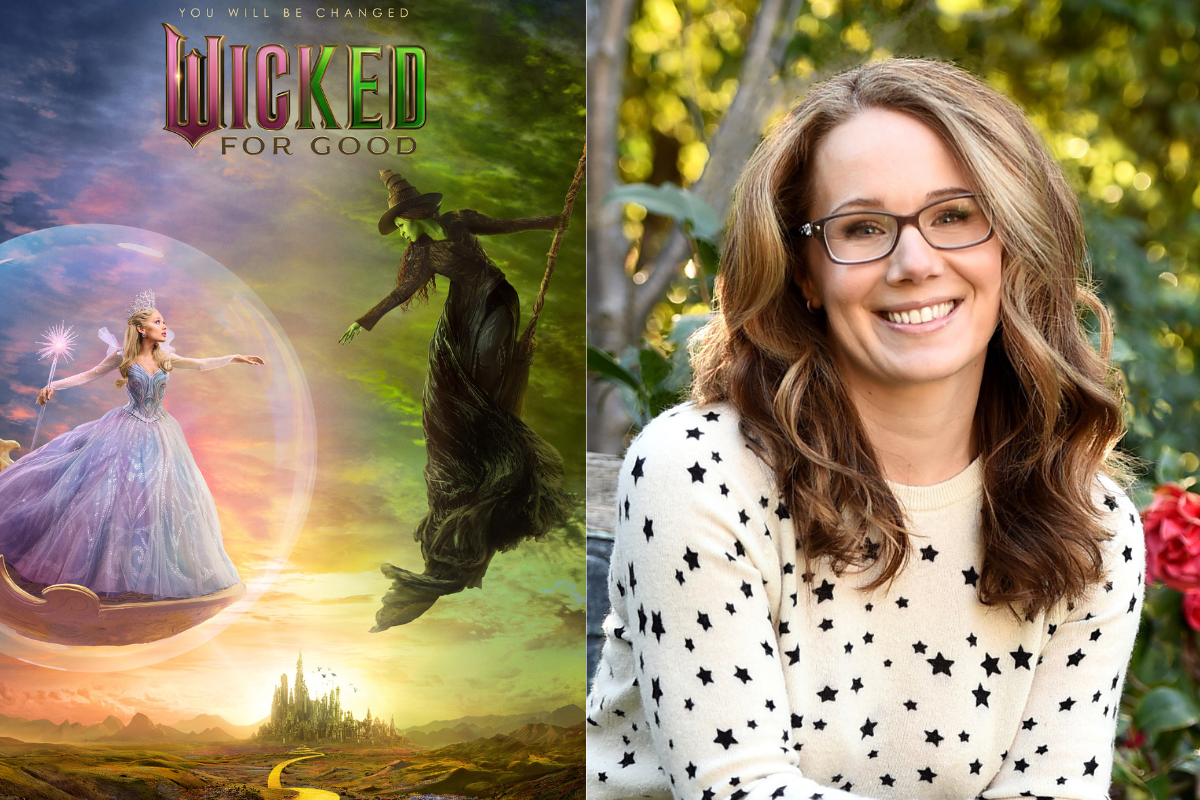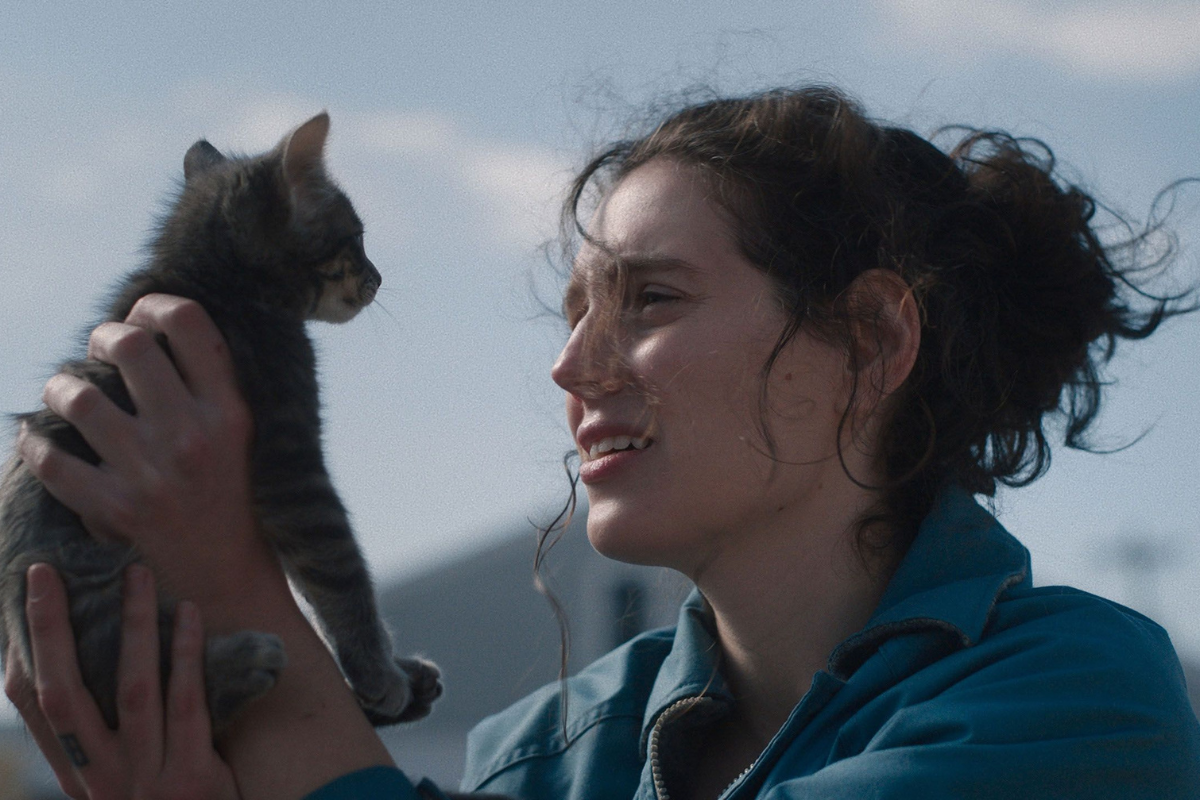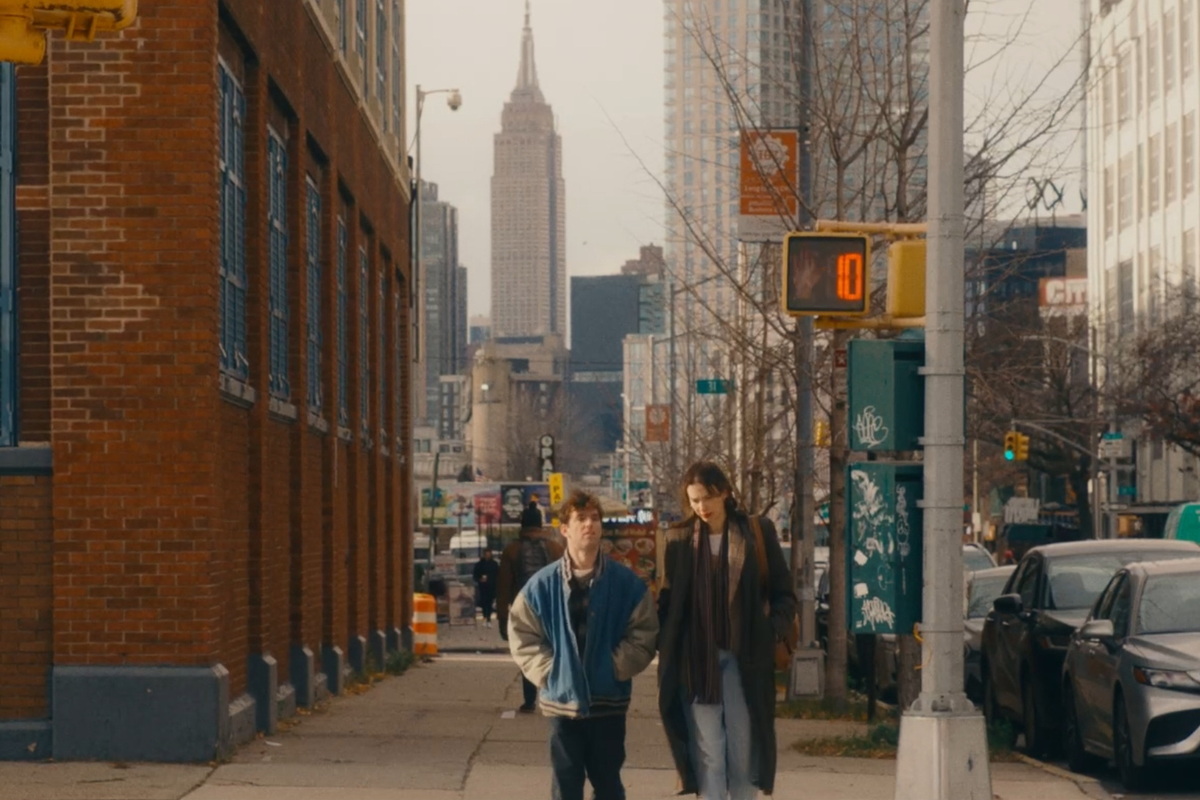INTERVIEW: ‘State (Remix)’ Filmmaker Alain Nouvel
Alain Nouvel discusses his globe-trotting journey to becoming a filmmaker, the process of editing his first feature, and how he was able to overcome artistic and logistical obstacles when filming.
Making a movie is no easy feat. Even more so when making one on an incredibly low-budget, with a skeleton crew and minimal cast. Now throw in a director who is also a writer, producer, and editor of the film who has gladly accepted the challenge of overcoming any obstacle in his way - down to even digital self-distribution.
Alain Nouvel is the filmmaker behind State (Remix), a low-budget feature film he wrote, directed, edited, and produced. Alain got his start in the film business in New York City in 2009 as a set runner on an independent feature film called Finding Julia and as a video editor for companies like Warby Parker, Lenovo, and Search Party Music. One day, Alain landed a job as Director’s Assistant to three-time Sundance Best Cinematography Award winner Ellen Kuras. For the next year he worked along side her in that role. She inspired him to make State (Remix), his first feature film.
Born in Washington D.C., the son of Irish and French immigrants, Alain lived in 4 countries on 3 continents by the time he was 22. Inspired to discover more of the world, Alain spent the next decade exploring it. By the time he was 32 he had lived on 5 continents in 7 countries, 10 cities and 24 different places. These journeys propelled him over the Indian Ocean; up and down the slopes of the Himalayas; found him resting by the cairns of Homer’s tomb and ambling through the streets of Paris in search of obscure movie theaters...
An old man, alone and abandoned by his only living relative, haunted by his role in altering the course of American history, prepares to commit suicide. His grandson, a young , traumatized veteran is on the edge, caught between his memory and reality, trying to reach his estranged girlfriend who doesn’t know that he’s back, or gone awol. In one last desperate attempt he seeks her out, but at this point everything is a trigger.
Filmmaker Alain Nouvel and I discuss his globe-trotting journey to becoming a filmmaker, the process of editing his first feature, and how he was able to overcome artistic and logistical obstacles when filming.
This interview has been edited for content and clarity.
Sadie Dean: Tell me about your journey to becoming a filmmaker.
Alain Nouvel: Oh, I guess that started when I was in school in France. And we studied theory and I did a semester abroad in New York and I learned more the practical side. And the goal was always that I wanted to make a film, something that resonated with me as an audience member. And I just always had that in the back of my mind, so when I started working in production and post-production in New York, I kept that goal in mind. And it wasn't until I started working as the assistant director to this woman, Ellen Kuras. She was a real inspiration to me, and I saw how she worked, and I really saw what it took at that point. I had this idea to make a film. I said, ‘Okay, this is the one let's do it and let's see where it goes.’ I don't think I could have ever prepared for the direction it ended up taking. So, it was an interesting journey.
Sadie: What inspired you to tell this story in particular, especially with that twist ending?
Alain: Ironically enough, I started at the end. It was in reading this article in a magazine, which described, I won't say what the event is to avoid any spoilers, but it described what took place after the event. And this question came to my mind, ‘Well, what if that was true, sort of that conspiracy? What would that mean?’ And so, I worked my way back from there. The films that always inspired me as a young man or as a child were very dramatic and [had] very much of a political or historical element to them. I was fortunate enough to be able to find that story and make it a story I could tell within the means, within the scope of what we had available.
Sadie: I read on your website your director statement that you don't see this film as a small film or an indie film, can you expand on that?
Alain: Well, I think there's a certain niche to indie film, which is it's obviously not Hollywood, large distributors. But I don't know if it is as much of an art film when it's an indie film. I think independent cinema is this very incredible medium, sort of between ultra-low budget and Hollywood big budget. And usually, it seems like filmmakers move from indie film into Hollywood and I think that with this film, I really wanted to make something that was intimate, to see what was possible with the tools we had at hand, given the technology has advanced so much for filmmakers in the last 100 years. I was basically like, ‘Okay, what can I do on my own that would have previously required a team to do?’ And I think with indie films, they still require quite a large team to get a film from pre-production through post-production into distribution. And for me, I was like, ‘What can I do? How much of this can I take on without going crazy?’ [laughs] I guess I went a little too far at times, but I managed to track back at the end of it.
Sadie: You got the movie done, so definitely kudos to you on doing that. Out of curiosity, what was your overall budget for the production? And how many production days did you have?
Alain: We had a pretty small budget. It was $20,000 and it was an 8-day shoot.
Sadie: It being such an intimate film, you have three key players, I would assume that your crew itself was pretty small as well?
Alain: Yeah, it was quite a small mobile crew. We had a lot of NYU students from a friend of mine, who was studying in the producer’s program there and she recommended some of the students who are also in the graduate programs there. And I was able to work with them and we got some interns involved as well. Tried to keep it small and mobile. And obviously, this was a huge learning experience for me as a filmmaker, as a director, and as a producer as well. So, there was a challenge. You know, it wasn't as good as it could be, but you know, you always learn from the experiences, and hopefully, you can take that experience and apply it to the next one.
Sadie: Was it an aesthetic approach or more of a budgetary constraint with the choice of using practical and natural lighting?
Alain: Well, I think the most practical lighting we used was for the outdoor scenes and in the living room, when we could. I wanted to make it an artistic choice, I think you can do a lot with practical lighting that adds to the mood, and also makes it feel a lot more natural. I think of Barry Lyndon as like a very powerful example of what can be achieved with natural lighting. I mean, he was using I think 17th-century lighting.
Sadie: Yeah, all of those candles. [laughs]
Alain: [laughs] Yeah, and the TV itself, it has this element for me, which is this, it's such an unnatural light in so many ways that I wanted to see if we could use it and it would add to the to the aesthetic of the film.
Sadie: Did you did you get anyone to pay for that pretty much free advertising that you're showing in those scenes on the TV?
Alain: [laughs] I wouldn't say it was [laughs] Some of it was very fortunate. We did have the DVR on so that if there was something we wanted, some element that looks that it matched with sort of the theme or sort of a counterpoint or theme played against the tone. Actually, the irony is that the story talks about what that conspiracy, which I won't mention, but we filmed it. The 8-days took place on the 50th anniversary of that event. So, while we were watching the TV, it was actually playing information about what had happened.
Sadie: Oh wow, that's really cool. That's, kismet there.
Alain: That's one of those easter eggs if you look for it.
Sadie: Easter eggs are always fun. So, let’s talk about your editing process. I did notice in your director statement that you had your ups and downs.
Alain: [laughs]
Sadie: Did you see any roadblocks while editing it yourself? Especially being the writer and director?
Alain: That’s a great question. I guess three months after we shot, I don't think I was prepared emotionally for the intensity from the shooting, to sort of rile me up so much that I almost didn't feel comfortable or capable of even looking at the footage. Because I knew that I was going to go on this sort of like, very personal journey in adapting my own vision as an editor. So, I held off for three months. And then dove in. I was fortunate to have worked as an editor before and was taught some pretty good lessons about organization and, you know, just building, you have your vision, you try and match it. And then if it doesn't work, you find a way to make it work. I remember the biggest roadblock was probably the special effects and the sound because I had very little experience with that. And there was one moment, I was living in Harlem, I was working as a French teacher and I was editing on nights and weekends and there was one scene that it's not even in the film anymore, but it was one scene that I didn't know if I can actually achieve it with the special effects because we couldn't do it as a practical effect when we were making the film. And I finally I got it. And that was the first moment I think in the entire journey and this was four years after we shot, it was the first moment where I actually knew that I could complete the film to the standard which I had set myself. That was probably the thing I hoped for most and expected least in terms of what it meant at that time.
Sadie: Pulling yourself together to edit this together is definitely a feat. I definitely enjoyed the first 15 minutes where we see the young man in his flashback and in combat, with that first person shooter feel. It definitely ramps up and amps up the stakes for him and his internal struggle.
Alain: Yeah, I'm glad that resonated. I felt most strongly about that part while I was writing and it translated most easily to the screen when I started editing. And because I knew what I wanted for those scenes, it was easy to shoot it and then take it on to the editing room and then export it. The production, because of the time constraints, we started to have to adapt and problem solve and I think that's where, you know, you live and you learn and you have to make it work somehow. So that's where I think I learned a lot about what I should do. Somebody told me before we wrapped was, just be careful, you know, when you edit, you're going to see the darkest part of yourself when you’re editing your own footage. [laughs]
Sadie: What was the process of how you were able to navigate and sell this film through Amazon Prime?
Alain: That was interesting because, it wasn't till we worked on the Remix when I finished editing, I said, ‘Well, you know, this is what I had originally intended and I made it as best I could’ but in the editing process, like I felt that it could be made into something a little bit more fluid. And I finished that in about November, and I had a conversation with a friend, and they said, “Hey, look, you know, you should get it up on Amazon Prime.” And I hadn't even occurred to me because all I had thought was, you know, go to film festivals, maybe to a distributor, and get them to buy it or figure out some way to distribute it. And she said, “No, no, just go to Amazon and figure out how to do it and you can do it all yourself.” So, I went on and it was much more straightforward than I thought. We submit it and they review it, and you sort of become your own distributor at that point. It’s really amazing.
And I'm glad it's out there, so if people want to watch it, you know, I’d love to get their feedback. That's the most important thing, really. But also, it's amazing that nowadays we can be our own distributor. And I couldn't imagine that growing up.
Sadie: Yeah, 10 years ago, that wasn’t something that you could easily grasp or obtain. Technology and everything else in filmmaking has definitely excelled, which is great. Last question for you, for a filmmaker setting out on making their first shoestring feature, what advice would you share to make the most out of what they have?
Alain: That's a great question. I mean, honestly, all these things are coming to my mind right now, but problem solving I guess was the is the first thing that comes to mind. Just that if you think about whatever you're trying to achieve image, sound or whatever effect or whatever mood or emotion or scene is what you aspire to create, and you're limited by your means. It's really a question of seeing what tools you have available, and sort of adding, like bringing them together so that they're not visible necessarily on the screen, but they're right there holding you up. I remember, we were shooting the scene where there's somebody climbing on a roof, and everything had been planned. I was doing everything, and I was like, ‘Oh my god, this is a very dangerous thing to do.’ And I realized for the actor, I forgot to ask him, you know, if he's ready to climb the roof. [laughs] So I was like, ‘Well looks like I'll be the one going out.’ [laughs]
I think that was a good way of knowing that it's possible if you’re willing to take the risk, you know, and solve the problem yourself. Luckily, I was the same build and I could put the hood on and go up. [laughs] It's funny, you can actually see me in the film. Which is another easter egg, I guess. [laughs]
State (Remix) is now available on Amazon Prime.
Learn more about the craft and business of screenwriting from our Script University courses!
Sadie Dean is the Editor of Script Magazine and writes the screenwriting column, Take Two, for Writer’s Digest print magazine. She is also the co-host of the Reckless Creatives podcast. Sadie is a writer and filmmaker based in Los Angeles, and received her Master of Fine Arts in Screenwriting from The American Film Institute. She has been serving the screenwriting community for nearly a decade by providing resources, contests, consulting, events, and education for writers across the globe. Sadie is an accomplished writer herself, in which she has been optioned, written on spec, and has had her work produced. Additionally, she was a 2nd rounder in the Sundance Screenwriting Lab and has been nominated for The Humanitas Prize for a TV spec with her writing partner. Sadie has also served as a Script Supervisor on projects for WB, TBS and AwesomenessTV, as well as many independent productions. She has also produced music videos, short films and a feature documentary. Sadie is also a proud member of Women in Film.
Follow Sadie and her musings on Twitter @SadieKDean







